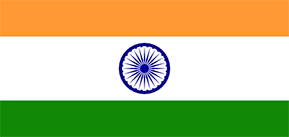India is one of the world’s oldest continuous civilizations dating back over 5,000 years. Today it is attracting business people from around the world who need to learn more about the social and business practices of this rapidly changing country that is still steeped in tradition in so many ways.
Indian Worldview
Group Orientation
Identity defined by group, family
Relationship Focused
Personal interaction takes precedence over tasks and timelines.
Hierarchy
Patterns of rank and status carefully observed
Tolerance for Ambiguity
Comfortable with change and ambiguous situations, as long as managerial guidance is present
Particularism
Loose application of rules; requires understanding of context and relationship
Fluid Time
Scheduling and deadlines are often flexible
Cultural Note:
- India is one of the world’s oldest continuous civilizations dating back over 5,000 years
- It has the world’s second largest population at 1.1 billion
- It is an extremely diverse country and contains literally hundreds of ethnic groups with their own distinct languages
Cultural Assumptions
- Family is of primary importance
- Fatalistic attitude; one’s path in life is directed by divine will
- National sense of pride in the country’s history and achievements
- Showing humility and respect for others
- Self-cultivation, education
- Being hospitable, building relationships
- Tolerance and religious harmony
- Perseverance and hard work
Indian Communication Style
Indirect
Imply/suggest what is meant. You need to read between the lines and develop a good relationship.
High Context
The way people interact is determined by the relationship.
Formal
Sensitivity to hierarchy/face saving very important.
Emotionally Expressive
Trust and credibility established by displaying emotion in communications. Visible display of feelings through nonverbal behavior
Circular
Message may weave and wander
Non-Verbal Dynamics
It is considered rude to snap your fingers. Pointing is done with the chin, as it’s insulting to point with fingers. Grabbing your ears is a sign of sincerity, since ears are considered sacred. Waving a hand side to side with palm facing forward, as one would to indicate “hello” in western cultures, is interpreted as “no” or “go away”.
Men and women do not touch when they are meeting. Western women can offer their hand to an Indian businessman who is familiar with western customs. However, businessmen commonly touch each other and back-slap as a common greeting. Public displays of affection between young men imply they are good friends (not gay). Displays of affection between opposite sexes—even a kiss— is considered inappropriate.
Indians value their personal space and expect to be at least an arm’s length away from others. Out in public, population density crowds people close together.
Values in Tension
Indian society is changing rapidly with globalization and the increase in foreign direct investment. This is bringing about cultural changes:
- Rural versus Urban
- Family vs. friends and work
- Generational differences
- Better education of the younger generation in urban areas
- Movement towards more gender equality among younger people in urban areas with higher education
Business Practices
| PROBLEM SOLVING | Solutions usually filter from top downwards, but assertion of ideas is acceptable within a certain parameter. |
| MOTIVATING PEOPLE | Supportive leadership (generates loyalty to individual, not to organization), providing training and perks. |
| APPRAISING PERFORMANCE | Direct discussion if good news, indirect mention of areas requiring improvement. |
| NEGOTIATING, PERSUADING | Top management network thrives on small talk, but in negotiating, extreme solutions may be presented, and bargaining continues all the way until a contract is signed. |
| DECISION MAKING PROCESS | Strong managers but weaker staff; decisions are the sole responsibility of top echelon. |
| PARTICIPATION IN MEETINGS | Open/expressive where hierarchy known and supportive, jockeying for dominant position if hierarchy is unknown; juniors without high connections ignored by seniors. |
| SUPERIOR / SUBORDINATE RELATIONSHIPS |
Paternalistic relationships; boss may be stand in for family elders and show support for business and personal problems; subordinates reciprocate with loyalty and respect. |
| HIRING | In larger organizations hiring/dismissal is based on merit. In smaller corporations or family businesses hiring may be relationship-based. |
| CUSTOMER RELATIONS | Inside connections essential; people go out of their way to support friends and family, otherwise indifferent. |

